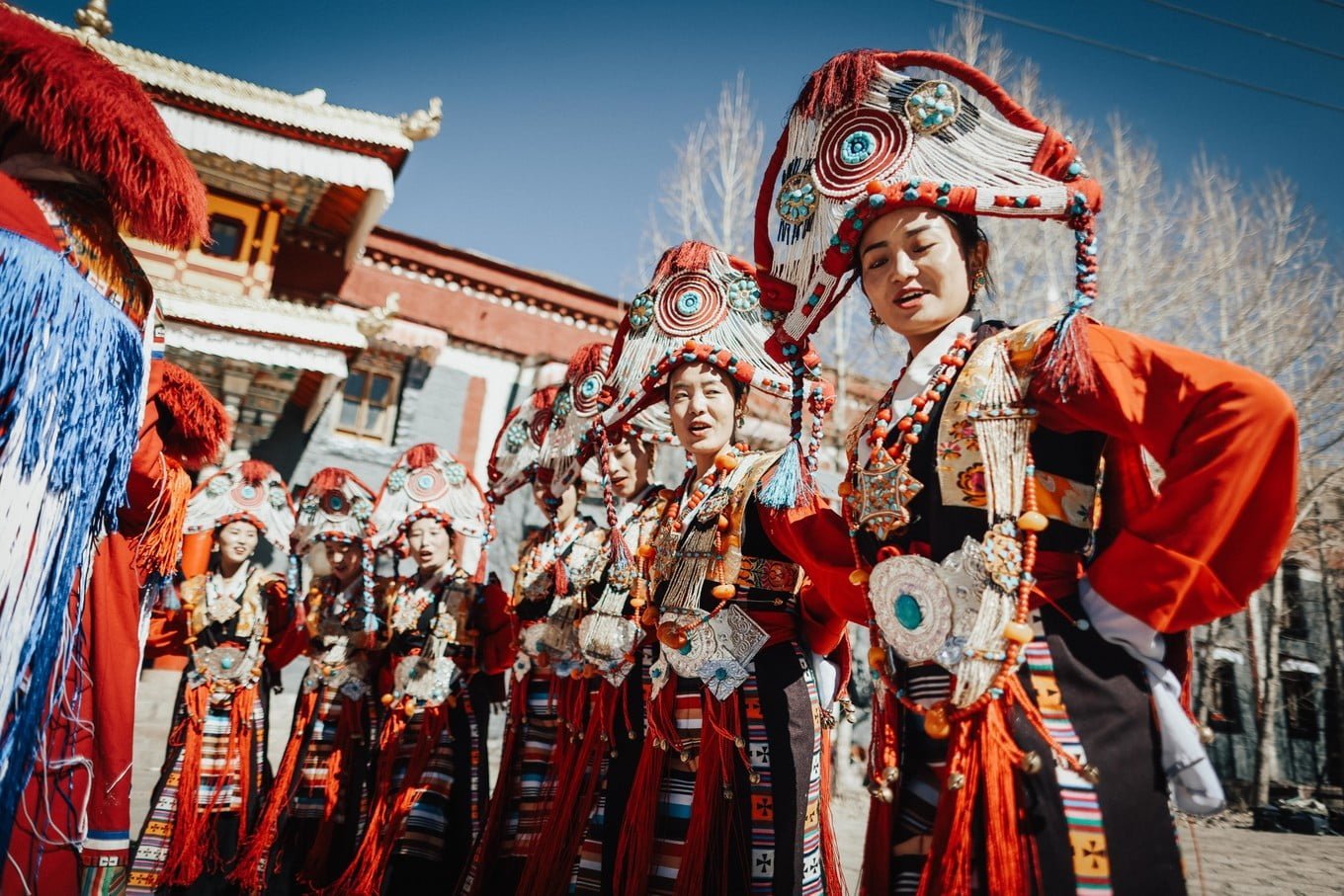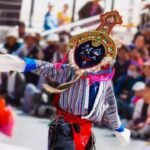Tibetan traditional musical instruments play a significant role in the daily lives of the Tibetan people, as well as in the wider society and cultural sphere of Tibet. These instruments hold immense influence and meaning, deeply woven into the fabric of Tibetan culture. The unique sounds produced by Tibetan traditional music instruments have an enchanting effect on both the listeners and performers alike.
Tibetan traditional music is vital for cultural expression and unity. It is important in religious ceremonies, festivals, and gatherings. It has gained global recognition, showcasing Tibet’s enchanting sounds and cultural heritage.
The significance of Tibetan traditional music extends beyond entertainment and cultural preservation. It serves as a powerful tool for expressing the Tibetan people’s struggles, aspirations, and resilience in the face of political and cultural challenges. Through their music, Tibetans are able to share their stories, traditions, and hopes for a brighter future.
Tibetan traditional musical instruments offer a captivating and diverse soundscape, with a rich history rooted in the culture and heritage of the region. These instruments can be broadly categorized into four types: plucked instruments, bowed string instruments, wind instruments, and percussion instruments, each contributing its unique timbre and significance to Tibetan music.
Plucked Instruments
Plucked instruments, a cherished part of Tibetan music, include the melodious Dramnyen and the captivating dulcimer. Dramnyen is a particularly representative instrument, known for its rich and resonant tones. Its roots trace back to the Tubo Dynasty, and it has evolved into a crucial accompaniment for singing, dancing, and instrumental ensembles. There are even claims that Dramnyen may have originated from a multi-stringed instrument brought to Tibet from ancient India.
Dramnyan
The Dramnyen is an important instrument in Tibetan culture, known as a traditional lute. It has a unique sound and is commonly played during festivals and celebrations. The melodious tunes of the Dranyen resonate with the Tibetan people, reflecting their deep connection with nature and spirituality. These lutes are not only used for entertainment but also for storytelling, passing down myths, legends, and historical tales from generation to generation.
The traditional Dranyen had three groups of sounds, each with two strings. The contemporary versions used in Tibetan opera are derived from it, with modifications such as using a single string instead of double strings. The high-pitched Dranyen now has four strings, while the Alto Dranyen has five strings.
Bowed String Instruments
Among the bowed string instruments, the ox-horned hut, known as “Piwang”, stands out. With a shape reminiscent of the erhu, this instrument is uniquely crafted from an ox horn. It is predominantly used to accompany string instruments and is significant in Tibetan music, adding depth and resonance to traditional compositions.
Piwang
Tibetan traditional music also incorporates other instruments such as the Dramnyen, Piwang, and Lingbu. The Dramnyen is a stringed instrument similar to a guitar, while the Piwang is a bowed instrument resembling a violin. Piwang is a high-pitched two-stringed fiddle with a bamboo sound box and a hard bow. Its sound is louder compared to other fiddles. It is commonly used as musical accompaniment in folk dances such as Nangma Toshay. This accompaniment has evolved into a distinctive Tibetan style and is greatly cherished by the Tibetan community.
Wind Instruments
Tibetan wind instruments offer a wide range of musical expressions. From recorders and bone flutes to the soft and melodious Religious trumpet, known as “Tongchin” in Tibetan, these instruments have been an integral part of Tibetan music for more than a millennium. The Tongchin, often referred to as the large trumpet, is played by trained lamas and produces deep and majestic tones. It plays a vital role during religious festivals and activities.
Lingpu
The Lingbu, on the other hand, is a transverse flute made from bamboo. Each of these instruments has its distinct sound and purpose, contributing to the diverse and vibrant Tibetan music landscape.
Percussion Instruments
Percussion instruments play a vital role in Tibetan Buddhist temples and rituals. The Darma drum, a small but indispensable instrument, is primarily used during temple rituals and sutra chanting. Monks often shake the Darma drum while chanting sutras, and it adds a rhythmic dimension to religious ceremonies.
Tibetan drum
Tibetan operas employ a round wooden drum with dual sides and an elongated handle. The size of the drum varies across different operas. The accompanying drum in Tibetan opera possesses a distinctive tone that is deep, resonant, and powerful.
Tibetan cymbal
Tibetan cymbal, made of copper, has two bubble-shaped plates and the two plates strike each other to produce sound. Different striking produces different tones. This instrument is widely used in Tibetan operas, folk, and religious dances.
Gyaling (Tibetan Suona)
Gyaling made of wood, is embroidered delicately with gold silver and jewels. It used to be an important religious musical instrument in monasteries and later entered Tibetan operas. It is the main accompaniment in Dergay Tibetan opera.
Tibetan Singing Bowl
One such instrument is the Tibetan Singing Bowl. These bowls, made of a combination of metals, produce a mesmerizing tone when struck or played in a circular motion with a mallet. The soothing vibrations emitted by these bowls are believed to have healing properties and can promote relaxation and meditation. Many Tibetan households have these bowls as part of their daily rituals, using them for various purposes including meditation, prayer, and spiritual ceremonies.
Artistic Vitality
Tibetan instruments, like Yangqin, have not only survived but thrived, showcasing their artistic vitality. They have enriched the tapestry of folk music culture, reflecting the skills and dedication of generations of artists who have honed their craft. These instruments are not just relics of the past; they are living traditions.
Cultural Significance
These Tibetan musical instruments not only enrich the auditory experience but also hold deep cultural and historical significance. They are symbols of Tibetan heritage and continue to be treasured for their role in preserving the region’s musical traditions.
Conclusion
Tibetan traditional musical instruments represent an enduring tradition, offering a unique glimpse into the region’s history and culture. From plucked and bowed string instruments to wind instruments and percussion, these musical treasures are a testament to the vibrant musical tapestry of Tibet, resonating with its rich heritage and diverse melodies.
Explore the world of Tibetan traditional musical instruments and discover the harmonious sound that has enriched the lives and culture of this remarkable region.
Unique FAQs about Tibetan Traditional Musical Instruments
- What makes Jamunie a significant plucked instrument in Tibetan music? Jamunie is celebrated for its rich and resonant tones, serving as a crucial accompaniment in Tibetan music for singing, dancing, and instrumental ensembles.
- How has the ox-horned hut, or “Biwang,” contributed to Tibetan musical compositions? The ox-horned hut is a distinctive bowed string instrument, adding depth and resonance to Tibetan music while predominantly accompanying string instruments.
- What is the historical significance of the Dama drum in Tibetan Buddhist temples? The Dama drum is an indispensable instrument used during temple rituals and sutra chanting, playing a vital role in religious ceremonies and adding rhythm to the proceedings.
- Why do Tibetan wind instruments like the Tongqin hold an enduring place in Tibetan culture? Tibetan wind instruments, particularly the Tongqin, produce deep and majestic tones, making them indispensable during religious festivals and activities.
- How have Tibetan traditional musical instruments contributed to the preservation of the region’s cultural heritage? These instruments are symbolic of Tibetan heritage, enriching the culture through their role in preserving traditional musical traditions.




















